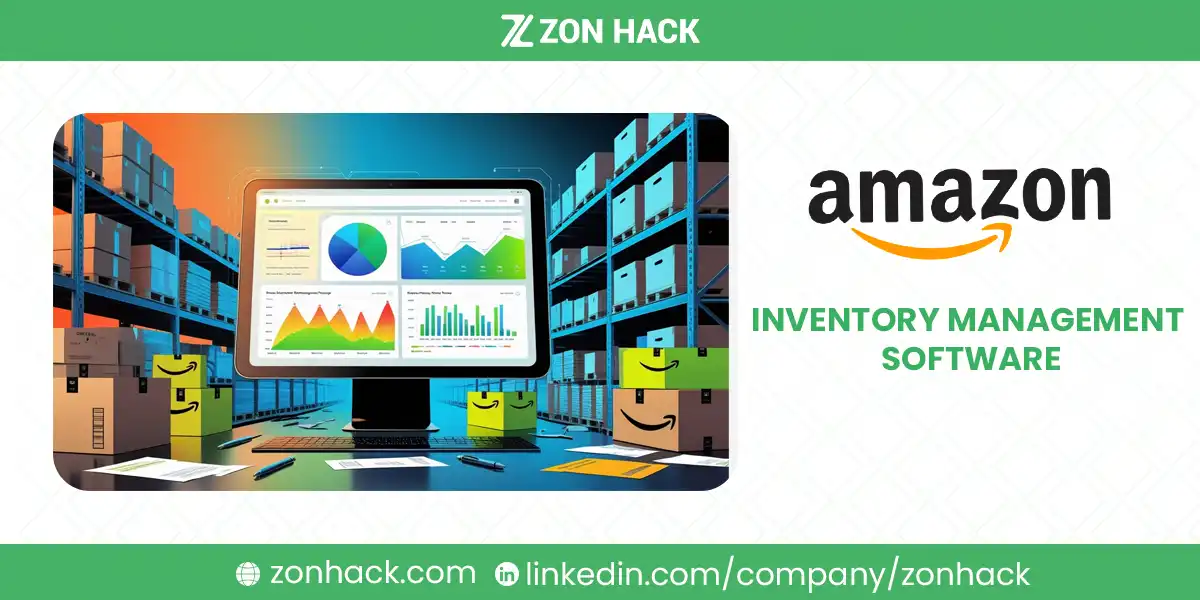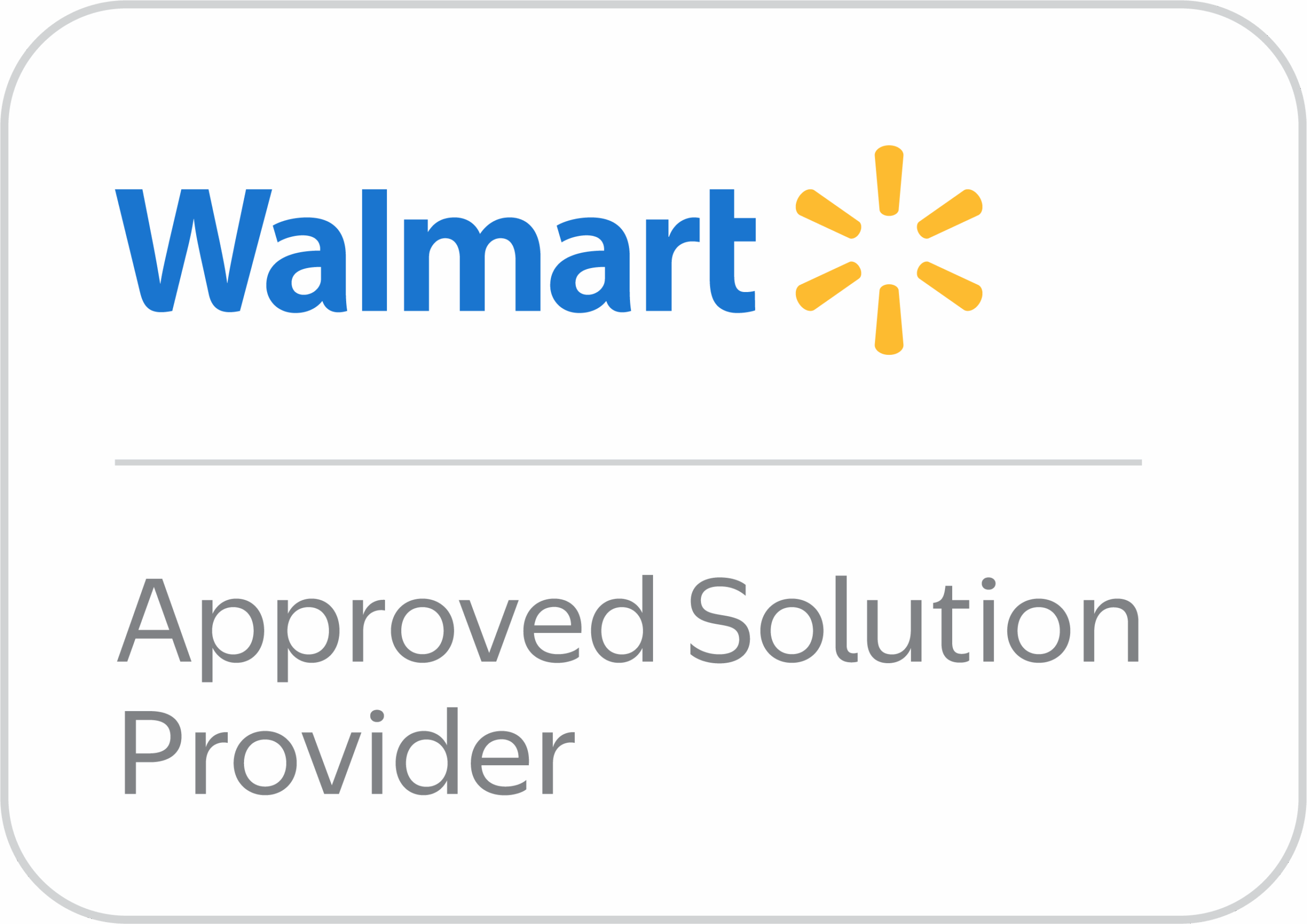ZonHack’s Guide to Mastering Inventory for Amazon Success
For any seller on Amazon, success isn’t just about the right product or perfect listing. It’s about never running out—and never sitting on too much. That’s where inventory management comes in.
Managing inventory is the hidden backbone of every profitable Amazon operation. When it’s done right, customers get their orders quickly, costs stay low, and rankings improve. When it’s not? You get stockouts, expensive storage fees, poor customer reviews, and even suspension from Amazon.
That’s why Amazon inventory management software exists. These tools help sellers track inventory levels, sales, incoming shipments, and forecast demand—all from one place. More than just fancy spreadsheets, these platforms offer real-time visibility and automation that help keep your operations lean and predictable.
At ZonHack, we’ve worked with hundreds of sellers who didn’t just need software like this—they depended on it to scale their operations. Whether you’re running a small FBA operation or managing multiple warehouses across several marketplaces, the right inventory software can spell the difference between growth and chaos.
Why Amazon Sellers Need Dedicated Inventory Software
You might wonder—doesn’t Amazon already offer tools for managing inventory?
Yes, but they’re barebones at best.
Amazon’s Inventory Performance Index (IPI) helps track performance, and Seller Central offers some data views. But sellers quickly hit a wall. Here’s why:
- Amazon tools don’t provide multi-channel visibility. If you sell on Shopify, Walmart, or use a 3PL, you’re on your own.
- There’s no advanced demand forecasting or automated replenishment logic.
- You can’t customize alerts or analytics.
- It’s impossible to manage multiple warehouses or run lean forecasting models inside Seller Central.
As sellers grow, they often rely on clunky Excel sheets to fill the gap. But manual tracking leads to errors. It’s time-consuming. It doesn’t scale.
Here’s what poor inventory management can cost you:
- Stockouts: Lost sales, missed Buy Box, and frustrated customers.
- Overstocking: Capital locked in unsold inventory and rising FBA storage fees.
- Fulfillment delays: Resulting in poor reviews and lowered seller ratings.
- Search ranking losses: Stockouts can reduce your visibility on Amazon.
As your business expands, automation and real-time intelligence become non-negotiable. That’s where third-party inventory software steps in—turning logistics headaches into automated workflows.
What to Look for in the Best Amazon Inventory Management Software
If you’re serious about running your Amazon business like a pro, your software stack matters. But not all tools are built equally. Here are the key features that truly matter when evaluating your options:
1. Real-Time Inventory Tracking
You need a system that gives you live stock visibility across all warehouses—Amazon FBA, your own storage, or 3PL. This helps prevent both overselling and stockouts.
Good software lets you:
- See current stock per SKU.
- Know what’s in transit, reserved, or fulfillable.
- Track by ASIN or product bundle.
This isn’t just a nice-to-have—it’s essential if you manage high volumes or multi-location logistics.
2. Demand Forecasting
The best platforms use historical sales data, seasonality, and trend analysis to predict future demand. This gives you a smarter way to reorder, preventing panic restocks or idle inventory.
Especially for Q4, Prime Day, or holiday cycles, demand forecasting tools help you:
- Plan ahead for high-velocity SKUs.
- Stay lean on slow-movers.
- Adjust forecasts based on real-time trends.
3. Automated Reordering
Set custom reorder points and triggers, and let the system automatically generate purchase orders or send alerts when stock runs low. This ensures nothing slips through the cracks.
Instead of manually checking stock levels daily, sellers can let the software reorder based on rules.
4. Multi-Channel Integration
Many Amazon sellers eventually expand—whether it’s Walmart, eBay, or Shopify.
Your inventory software should support:
- Seamless integrations with other eCommerce platforms.
- Unified dashboards to monitor all stock.
- Channel-specific stock syncing to avoid overselling.
This makes it easier to run a true omnichannel operation.
5. Order Management
Top tools consolidate orders from different platforms, helping streamline:
- Order routing
- Shipping label generation
- Fulfillment prioritization
This improves efficiency, especially during busy sales windows.
6. Reporting and Analytics
Look for intelligent dashboards and customizable reports. Key metrics to monitor include:
- Sell-through rate
- Inventory turnover
- Aging inventory
- Stockout frequency
- Profitability per SKU
Data insights allow for smarter decisions, not just reactive fixes.
7. Amazon FBA Integration
If you’re using FBA, your inventory tool must integrate directly with your Amazon account. This ensures:
- Smooth inbound shipment planning.
- Accurate tracking of FBA availability and reserved inventory.
- Simplified restocking suggestions tailored to FBA rules.
Additional Features That Make a Difference
While core features matter most, extra functionalities can make your workflow even smoother.
For advanced sellers, here are some powerful add-ons to consider:
Barcode Scanning
Ideal for warehouse management. It helps reduce errors during receiving, shipping, or counting.
Supplier Management
Track lead times, issue POs, and monitor vendor performance from a single interface.
Kitting & Bundling
If you sell multipacks or kits, this feature helps track individual components and updates inventory when a kit is sold.
Returns Management
Manage Amazon and non-Amazon returns in one place. Automatically adjust stock and analyze return reasons.
Integration with Accounting Tools
Sync with QuickBooks, Xero, or other platforms to streamline bookkeeping and reconciliation.
Multi-Warehouse Management
As your business scales, being able to track inventory across multiple physical or virtual warehouses is critical.
Customization & Rules
Tailor reorder rules, create custom stock alerts, or modify reports based on how your business operates.
Top Inventory Management Software Options for Amazon Sellers
There’s no shortage of software tools promising to simplify your inventory headaches. But not all solutions are built the same. Below is a curated list of the most trusted and widely used Amazon inventory management tools, tailored to different business sizes and operational needs.
We’ve broken them down with key features and pricing notes to help you make an informed decision.
1. Unleashed
Best for: Mid-sized businesses needing real-time inventory tracking and automated purchasing.
- Real-time stock updates
- Advanced demand forecasting
- Integrates with Amazon, Shopify, Xero, QuickBooks
Pricing starts at $380/month
2. Sellbrite
Ideal for smaller sellers expanding into multichannel.
- Syncs inventory across Amazon, eBay, Walmart, Shopify
- Automated listing management
- Free plan available
Paid plans start at $29/month
3. Linnworks
Enterprise-grade control for complex operations.
- Centralizes order and inventory management across channels
- Strong reporting tools
- Built-in shipping and returns processing
Custom pricing upon request
4. Jungle Scout Inventory Manager
Amazon-specific and great for solo sellers and small teams.
- Predicts stock needs based on trends
- Reorder reminders
- Built-in FBA optimization
Starts at $29/month
5. Brightpearl
For retail brands and high-volume sellers.
- CRM, warehouse, and inventory in one system
- Multichannel sales tracking
- Forecasting and accounting integration
Custom quote required
6. SoStocked
Built specifically for Amazon inventory control.
- Forecasts based on sales, seasonality, past stockouts
- Tracks restock limits
- Visual dashboards
Contact for pricing
7. Skubana
One of the most powerful back-end ops tools for scaling.
- Centralizes orders, purchase orders, and inventory
- Automation for reorders, bundles, and kitting
- Works across Amazon, Shopify, BigCommerce
Pricing available on request
8. Veeqo
A solid all-in-one for retail and online sellers.
- Central dashboard
- Free shipping software included
- Amazon, eBay, Shopify, WooCommerce integration
Some features are free; premium pricing available
9. Finale Inventory
Simple but effective.
- Demand forecasting
- Order and purchase tracking
- Works with barcode scanning and QuickBooks
Paid plans range between $99–$449/month
10. Orderhive
Great for growing eCommerce brands.
- Automated order routing
- Real-time stock sync
- In-depth analytics
Subscription starts at $95/month
Choosing the Right Inventory Software for Your Amazon Business
There’s no one-size-fits-all solution. The best software for your Amazon store depends on your specific setup.
Before committing, ask:
- Do I sell only on Amazon, or on other platforms too?
- Am I fulfilling through FBA, FBM, or both?
- Do I operate out of multiple warehouses or just one?
- What’s my monthly order volume?
- Do I need integrations with accounting tools, shipping carriers, or CRMs?
- Am I looking for automation or granular control?
Also, consider budget. Some tools offer basic features starting under $50/month, while others—especially those targeting larger operations—charge upwards of $300 or more. Nearly all offer free trials or demo versions, so take advantage of those before locking in.
ZonHack Tip: If you’re managing clients as an Amazon agency or overseeing multiple brands, consider software that supports multi-account inventory tracking. It’ll save time, avoid miscommunication, and deliver cleaner data.
Implementing and Maximizing the Benefits
Investing in software is just the first step. To get full value, you’ll need to:
1. Set up Integrations Properly
Make sure your software is connected with:
- Amazon Seller Central
- Your shopping cart or ERP (if applicable)
- Shipping tools (like ShipStation or Easyship)
- Your accounting software (e.g., Xero, QuickBooks)
2. Configure Automation Settings Thoughtfully
Don’t just turn on auto-reordering and forget it. Make sure your thresholds reflect realistic lead times and supplier delays.
3. Train Your Team
From warehouse workers to ops managers, everyone should know how to use the dashboard, update product details, and check reorder points.
4. Leverage Forecasting Tools
Use past data to anticipate future needs—especially around Q4, Prime Day, or other sales events. This can prevent both stockouts and expensive overstock.
5. Monitor KPIs Weekly
Track metrics like:
- Inventory Turnover Ratio
- Days of Inventory Left
- Deadstock Volume
- FBA Inbound Shipment Timeliness
This helps fine-tune purchasing cycles and keeps your operations agile.
Cloud-based inventory systems are especially powerful here—giving your team real-time access from anywhere and centralizing all your data.
Bottom Line: Invest in Systems, Not Spreadsheets
Here’s the bottom line: You can’t grow your Amazon business if your inventory is a mess.
Manual spreadsheets or Amazon’s limited tools might work when you’re just starting out—but they crumble under pressure once sales pick up.
By implementing dedicated Amazon inventory management software, you can:
- Avoid costly stockouts or overstock fees
- Improve delivery reliability
- Centralize operations across marketplaces
- Free up capital and time
- And most importantly, keep your customers happy
Whether you’re running a solo FBA brand or managing dozens of client accounts as an agency, inventory chaos will stall your growth. At ZonHack, we help sellers streamline these systems, integrate the right tools, and scale without drowning in operational debt.
Your inventory isn’t just numbers on a sheet—it’s your cash flow, customer experience, and growth potential. Get it right from the start.




